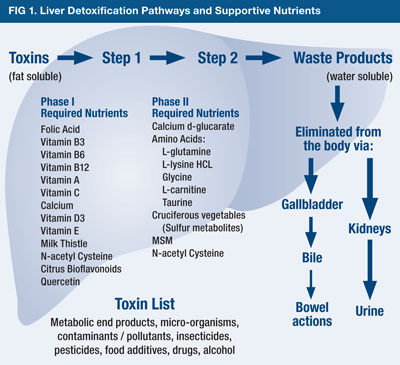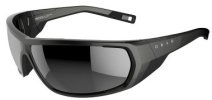http://www.ithyroid.com/vitamin_b-12.htm
So hay fever may be a sign that phase one detoxification isn't working.
http://www.carahealth.com/health-conditions-a-to-z/digestive-system/detox/365-phase-1-and-2-liver-detoxification-pathways60.html
It is required for phase one detoxification of chemicals in the liver, and can help people who are allergic to sulphites, which are common food and wine additives. A study showed that vitamin B12 can effectively block most of the adverse reactions to sulphites such as hay fever, sinus, headache and bronchial spasms. B12 is required in increased amounts by those who use alcohol excessively or in liver disease.
So hay fever may be a sign that phase one detoxification isn't working.
http://www.carahealth.com/health-conditions-a-to-z/digestive-system/detox/365-phase-1-and-2-liver-detoxification-pathways60.html
Phase One - Detoxification Pathway
Phase one detoxification consists of oxidation reduction and hydrolysis. Phase one detoxification is catalysed by enzymes referred to as the cytochrome P450 enzyme group or Mixed Function Oxidase enzymes MFO. These enzymes reside on the membrane system of the liver cells (called Hepatocytes). Human liver cells possess the genetic code for many isoenzymes of P-450 whose synthesis can be induced upon exposure to specific chemicals. This provides a mechanism of protection from a wide variety of toxic chemicals.
To put it simply, this pathway converts a toxic chemical into a less harmful chemical. This is achieved by various chemical reactions (such as oxidation, reduction and hydrolysis), and during this process free radicals are produced which, if excessive, can damage the liver cells. Antioxidants (such as vitamin C and E and natural carotenoids) reduce the damage caused by these free radicals. If antioxidants are lacking and toxin exposure is high, toxic chemicals become far more dangerous.
Some may be converted from relatively harmless substances into potentially carcinogenic substances. Excessive amounts of toxic chemicals such as pesticides can disrupt the P-450 enzyme system by causing over activity or what is called 'induction' of this pathway. This will result in high levels of damaging free radicals being produced. The danger is if these reactive molecules are not further metabolised by Phase II conjugation, they may cause damage to proteins, RNA, and DNA within the cell.
Substances that may cause overactivity (or induction) of the P- 450 enzymes
Caffeine
Alcohol
Dioxin
Saturated fats
Organophosphorus pesticides
Paint fumes
Sulphonamides
Exhaust fumes
Barbiturates
The family of P-450 enzyme systems is quite diverse, with specific enzyme systems being inducible by particular drugs, toxins or metabolites. It is this characteristic that has allowed the development of special tests to check the function of the various pathways.
The Substrates (the substance acted upon by the enzyme) of cytochrome P-450 enzymes.
Theophylline
caffeine
phenacetin
acetaminophen
Lidocaine
erythromycin
cyclosporin
ketoconazole
testosterone
estradiol
cortisone
Alprenolol
bopindolol
carvedilol
metoprolol
propranolol
Amitriptyline
clomipramine
desipramine
nortriptyline
Codeine
dextrometh- orphan
ethylmorphine
4-methoxyamphetamin
Phenytoin
ibuprofen
naproxen
oxicam drugs
S-warfarin
Diazepam
hexobarbitone
imipramine
omeprazole
alcohol
chlorzoxazone
enflurane
Cofactors of P450 Phase 1 detoxification
NADH, riboflavin, niacin, magnesium, iron, certain indoles from cruciferous vegetables.
Substances that inhibit cytochrome P450
Many substances inhibit cytochrome P450. This situation can cause substantial problems as it makes toxins potentially more damaging because they remain in the body longer before detoxification.
Grapefruit
Grapefruit juice decreases the rate of elimination of drugs from the blood and has been found to substantially alter their clinical activity and toxicity. Eight ounces of grapefruit juice contains enough of the flavonoid naringenin to decrease cytochrome P450 activity by a remarkable 30%.
Curcumin
Curcumin, the compound that gives turmeric its yellow colour, is interesting because it inhibits phase I while stimulating phase II. This effect can be very useful in preventing certain types of cancer. Curcumin has been found to inhibit carcinogens, such as benzopyrene (found in grilled meat), from inducing cancer in several animal models. It appears that the curcumin exerts its anti-carcinogenic activity by lowering the activation of carcinogens while increasing the detoxification of those that are activated. Curcumin has also been shown to directly inhibit the growth of cancer cells. As most of the cancer-inducing chemicals in cigarette smoke are only carcinogenic during the period between activation by phase I and final detoxification by phase II, curcumin in the turmeric can help prevent the cancer-causing effects of tobacco.
Phase I detoxification and ageing
The activity of phase I detoxification enzymes decreases in old age. Aging also decreases blood flow through the liver, further aggravating the problem. Lack of the physical activity necessary for good circulation, combined with the poor nutrition commonly seen in the elderly, add up to a significant impairment of detoxification capacity, which is typically found in ageing individuals. {B12 becomes depleted with age and stress}
[..]

Toxic Overload
If the phase one and two detoxification pathways become overloaded, there will be a build up of toxins in the body. Many of these toxins are fat soluble and incorporate themselves into fatty parts of the body where they may stay for years, if not for a lifetime. The brain and the endocrine (hormonal) glands are fatty organs, and are common sites for fat-soluble toxins to accumulate. This may result in symptoms of brain dysfunction and hormonal imbalances, such as infertility, breast pain, menstrual disturbances, adrenal gland exhaustion and early menopause. Many of these chemicals (eg. pesticides, petrochemicals) are carcinogenic and have been implicated in the rising incidence of many cancers.
Bitter herbs to improve phase 1 and 2 detoxification
Bitter herbs are the corner stone of herbal medicine. A range of physiological responses occur following stimulation of the bitter receptors of the tongue. The bitter taste stimulates the specific bitter taste buds at the back of the tongue to stimulate the parasympathetic nervous system to trigger a number of reflexes. These reflexes are important to the digestive process and general health.
Specifically in relation to digestion herbal bitters;
Sialogogues – stimulate saliva to digest carbohydrates.
Orexogenics – stimulate hydrochloric acid to digest protein.
Chologogues – Stimulate bile flow to digest fats.
The stimulation of the flow of digestive juices from the exocrine glands of mouth, stomach, pancreas, duodenum and liver, aid in digestion, absorption and assimilation of foods and nutrients. There is also a very mild stimulation of endocrine activities, especially insulin and glucagon secretion by the Islets of Langerhans in the pancreas therefore used to treat of non-insulin dependent diabetes. By promoting the flow of bile, bitters assists the liver in its detoxifying capacity.


